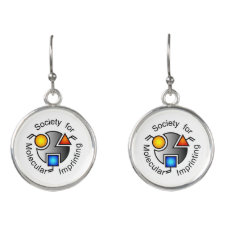
Authors: Reddy SM, Sette G, Phan Q
Article Title: Electrochemical probing of selective haemoglobin binding in hydrogel-based molecularly imprinted polymers.
Publication date: 2011
Journal: Electrochimica Acta
Volume: 56
Issue: (25)
Page numbers: 9203-9208.
DOI: 10.1016/j.electacta.2011.07.132
Alternative URL: http://epubs.surrey.ac.uk/7316/
Abstract: An electrochemical method has been developed for the probing of hydrogel-based molecularly imprinted polymers (HydroMIPs) on the surface of a glassy carbon electrode. HydroMIPs designed for bovine haemoglobin selectivity were electrochemically characterised and their rebinding properties were monitored using cyclic voltammetry. The electrochemical reduction of bovine oxyhaemoglobin (BHb) in solution was observed to occur at -0.460 V vs (Ag/AgCl) in 150 mM phosphate buffer solution (PBS). When the protein was selectively bound to the MIP, the electrochemical reduction of oxyhaemoglobin could be observed at a similar peak potential of -0.480 V vs (Ag/AgCl). When analysing the non-imprinted control polymer (NIP) interfaced at the electrode, which contained no protein, the peak reduction potential corresponded to that observed for dissolved oxygen in solution (-0.65 V vs (Ag/AgCl)). MIP and NIP (in the absence of protein) were interfaced at the electrode and protein allowed to diffuse through the polymers from the bulk solution end to the electrode. It was observed that whereas NIP exhibited a protein response within 10 min of protein exposure, up to 45 min of exposure time was required in the case of the MIP before a protein response could be obtained. Our results suggest that due to the selective nature of the MIP, BHb arrival at the electrode via diffusion is delayed by the MIP due to attractive selective interactions with exposed cavities, but not the NIP which is devoid of selective cavities
Template and target information: protein, bovine haemoglobin, BHb
Author keywords: hydrogel, MIP, protein, biomimetics, electrochemistry



Join the Society for Molecular Imprinting

New items RSS feed
Sign-up for e-mail updates:
Choose between receiving an occasional newsletter or more frequent e-mail alerts.
Click here to go to the sign-up page.
Is your name elemental or peptidic? Enter your name and find out by clicking either of the buttons below!
Other products you may like:
 MIPdatabase
MIPdatabase









